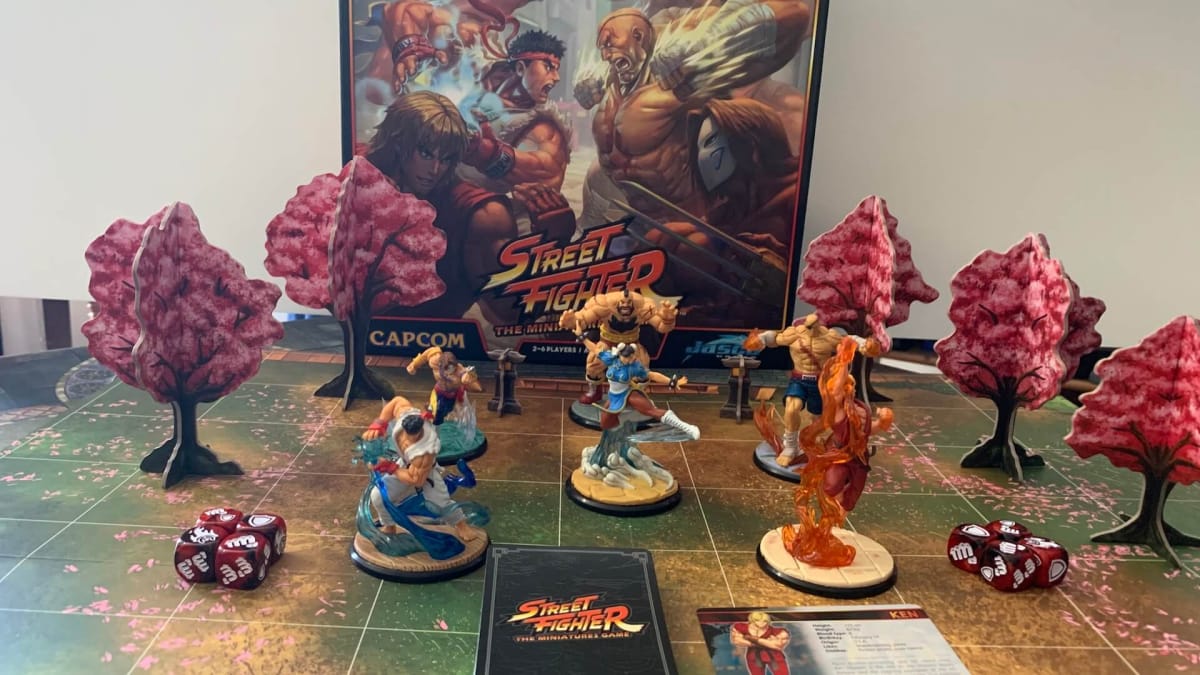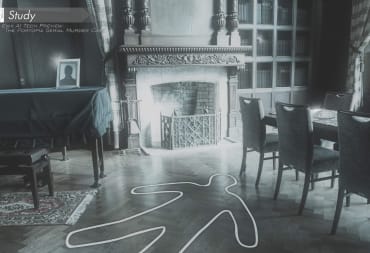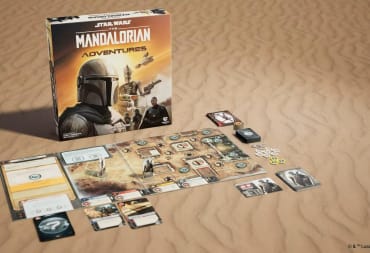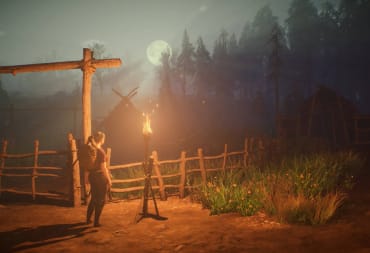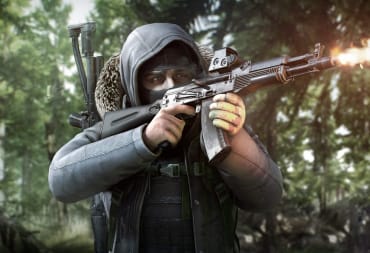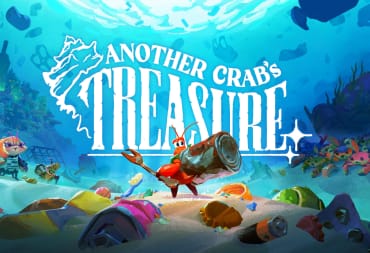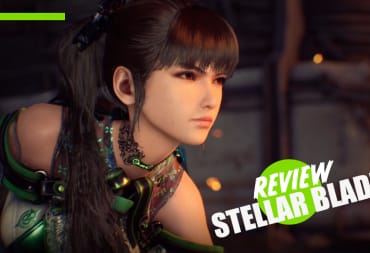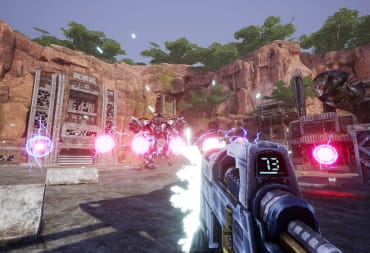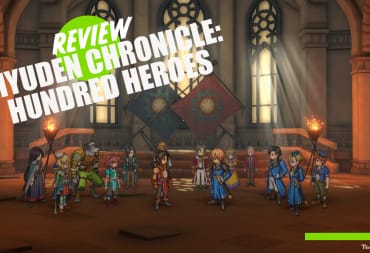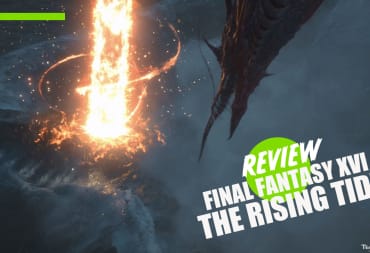Street Fighter has been around for more than thirty years, and for good reason. The series has thrived on vibrant and iconic character designs, a campy and expressive tone, and an in-depth, genuinely absorbing fighting system. It's also a series prone to crossovers. Everything from Wreck-It Ralph, to the live-action movie starring Raul Julia, to Fortnite, this is a fearless series when it comes to trying out new things. Now, thanks to the magic of Kickstarter, we have Street Fighter: The Miniatures Game, designed by Joe Vargas and released by Jasco Games.
Street Fighter: The Miniatures Game is a competitive miniature and card-based board game. Two to six players choose a character, then take the associated figure and character deck. After shuffling the deck and placing the figure on the tile-based map, you draw a hand of cards. These cards have different attacks and events on them, and you take turns with your opponent to move, play cards, and roll dice to either attack or defend. Once a fixed amount of time has passed, or a character's health reaches zero, the round is over, the board is reset, and all players reshuffle their decks. Whoever wins two out of three rounds wins the game.
Right off the bat, I have to commend the level of quality of Street Fighter: The Miniatures Game's parts. The cards are glossy, the backs are lightly molded and the artwork features work from several acclaimed artists as well as the team behind the Street Fighter manga: UDON Entertainment. As for the miniature models, they are stunning. Each one comes prepainted and packed with detail. Not only are the figures themselves brimming with personality and definition while striking an iconic pose, the very bases they stand on are packed with detail and texture, too. Even if you've never heard of any of these characters before, you know what they're all about just from looking at these models.
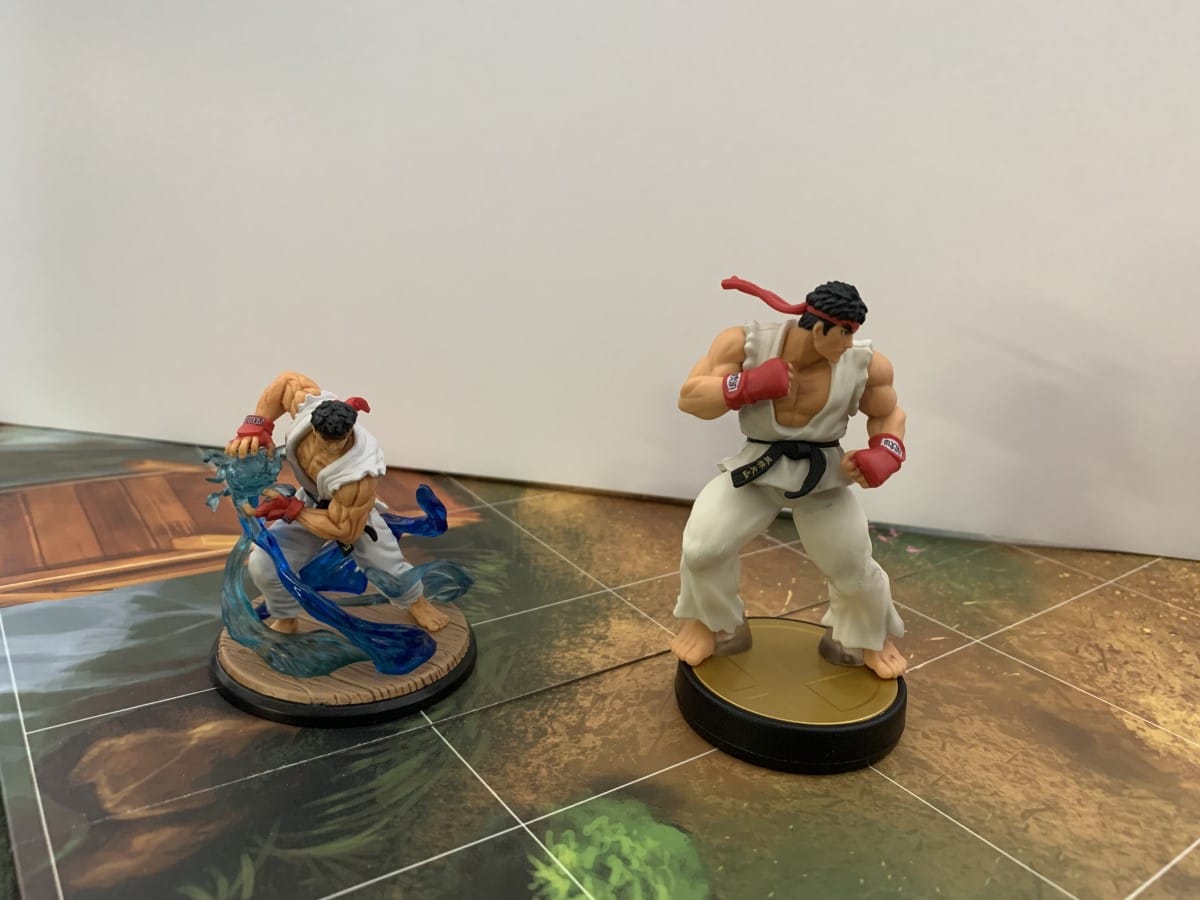
This level of authenticity stretches to the maps as well. Not only are the tile maps based around actual stages from the video games, they even include cardboard 3D terrain. Everything from cherry blossum trees to crates to stone lanterns all can be snapped together with cardboard props. There are only two maps available in the base game — Guile's Air Force Base and Tokyo's Zen Garden Temple — but they each bring their own visual and gameplay benefits to each match-up.
My only real complaint with the pieces and layout of the box is storage. Once the character decks are out of their plastic wrap there aren't any dedicated areas for them to settle. This can lead to some messes during initial start up, searching for the right cards for the right decks and the like. There are some fan-made deck boxes available for printing as well as other solutions you can make, just know that it's a solution the box won't provide.
Which finally brings us to the biggest knot to untangle with the game: the combat itself. It is no surprise that a game based on Street Fighter is going to have some complicated combat, and this is no exception. The basic idea is that after moving your character you play a card from your hand face-down, then your opponent decides on how to react: they can either defend themselves or attempt to counter. You then reveal the card in question. If it's an attack and they decided to defend, dice are rolled and the result is depleted from the defender's health. If it's an event card, the event happens which can change the rules of game, modify the battlefield, or boost card effects and future dice results. But if the defender chooses to counter, they must respond with an attack card of their own. If the attacker's card is an attack type that matches the defender, the attack is canceled. If it doesn't, the attacker's card continues but the defender cannot roll dice to defend; they have to take the full hit.
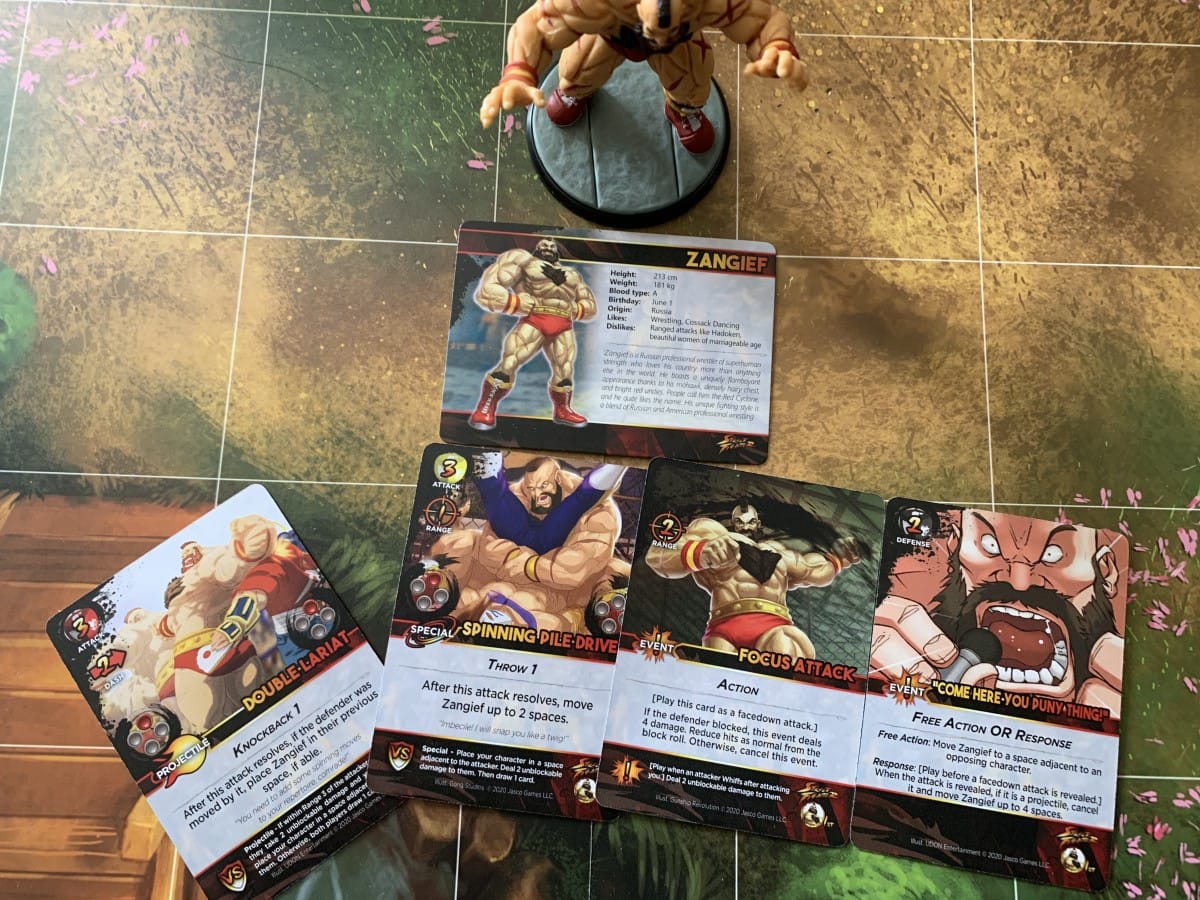
There's a lot to enjoy at the heart of this system. It plays into the mind game elements of a high-stakes Street Fighter match as well as rewards you for understanding each fighter's core combat style. Someone playing as Ryu keeping their distance is most likely packing some Hadoken cards in their hand, but what if he's just baiting you into closing the gap for some counters? Better still, depending on how attack and defense resolves, cards return to their players' hands, compounding this feeling of cat and mouse.
But much like the source material, there's a lot more information to process going in. In addition to the aforementioned hand management and last minute decision making, there's the issue of spatial awareness. Terrain can be destroyed by throwing opponents through them for bonus damage. In addition to health management you have a Special Meter which can be used for signature Ultra and Super attacks as well as the ability to EX (or supercharge) certain attack cards. There are even rules and systems based around more high-end fighting game terminology like punishing whiffs, pokes and mix-ups.
But the biggest wrinkle comes with the game's combo system. Almost every attack has four different dots marked on the left or right side of the card, referred to as Linkers. They are even mapped out similarly to buttons on an arcade fight pad. If your attack card dealt damage to your opponent, you may immediately play another attack card as long as one of those four buttons match one on the new card. The defender can't counter any of these attacks, they can only defend, and you can play as many cards as you are able.
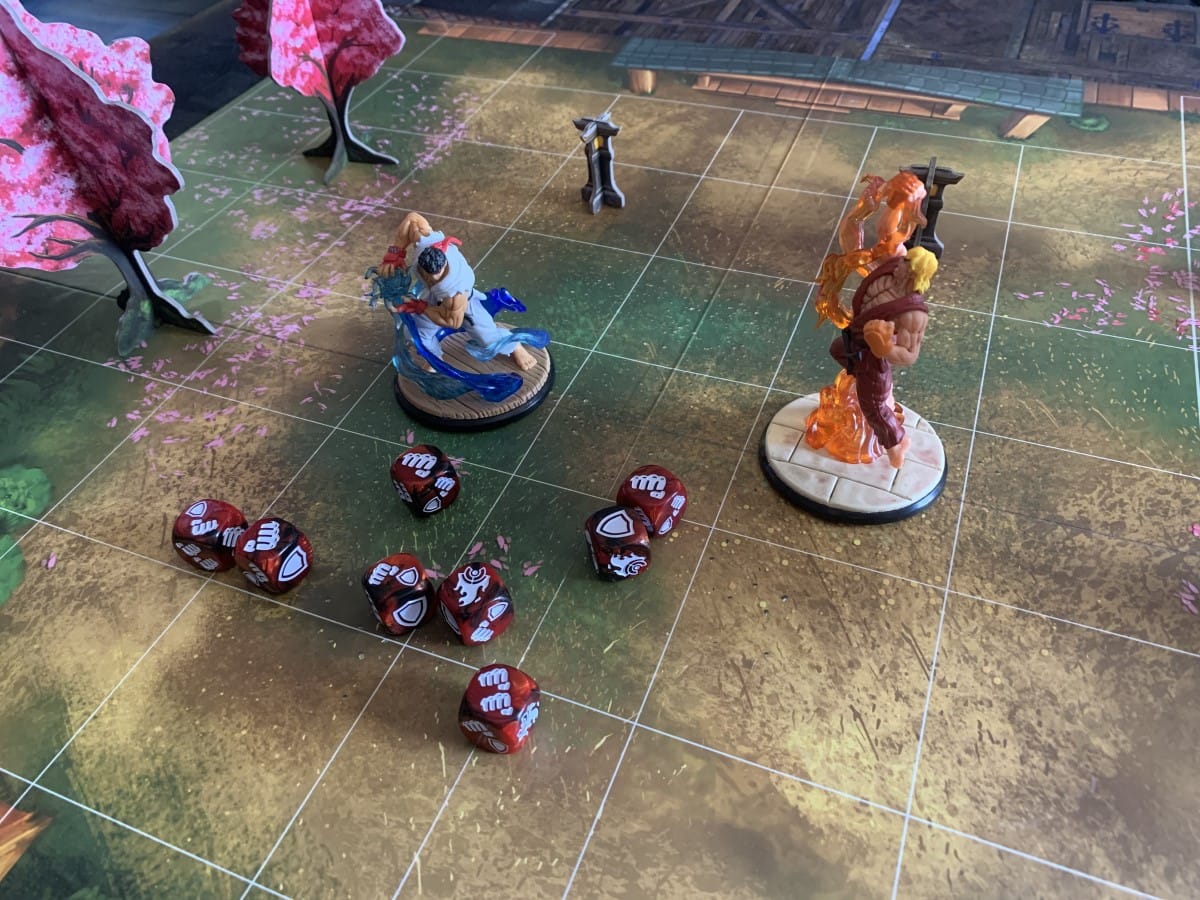
Taken in all at once, this kind of depth can make the new player experience for Street Fighter: The Miniatures Game very daunting. On several occasions when I was teaching the game to new players, there was a lot of rule-checking clarification, and debates regarding everything from event resolution to how Focus Attacks work. At the end of each game they shared a very similar sentiment: It was very fun, but mentally exhausting.
This phrase came up when I looked beyond the core rules. The thrill of chaining combo cards together, the back and forth psychological warfare of the game's attack and defend system, and the abundant dynamic flavor and texture that character's Event cards can bring to a fight are all impressively handled, but is a lot to take in all at once.
In a way, Street Fighter: The Miniatures Game reminds me of Games Workshop's iconic miniature game franchise, Warhammer 40,000. Both are games with rich universes and iconic characters. Both are surprisingly complex games that can feel impenetrable (if you're not in the know), while offering countless hours of fun to those who get into it. But above all, both are going to be constantly amended with updates and errata to keep the meta interesting. As it stands right now in the base game, there are little to no defense options against throw attacks, you literally cannot roll defense dice against a throw, just counterattack. Because of this, one of the higher tier fighters right now is Zangief.
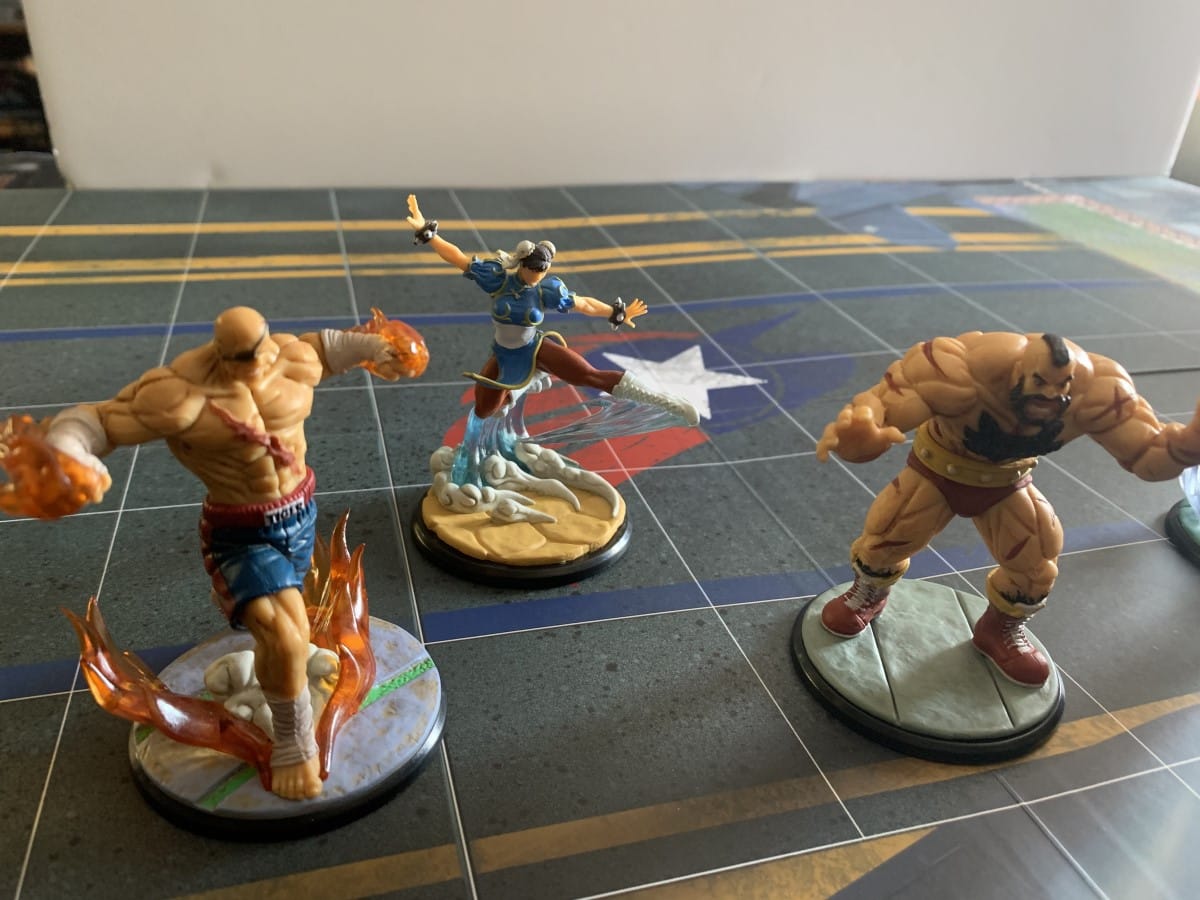
Otherwise, the issues mostly boil down to extremely technical, in-the-weeds rulings. While the rulebook itself is laid out with some solid cheatsheets and a few golden rules to follow for general play, the actual word choice and rule placement can lead to a lot of flipping around the rulebook as well as misinterpretation. A more streamlined system of shorthand: symbols, keywords, etc., would go a long way to clearing this up.
The only other thing to note about Street Fighter: The Miniatures Game is pricing. If you were not part of the initial Kickstarter, you can still order the game and its expansions from Jasco Games' official website. These expansions are surprisingly comprehensive, including additional maps like Balrog's Las Vegas Casino or Dhalsim's Temple, as well as characters from other Street Fighter installments like the sadistic Juri Han or the eternal punchline that is Dan Hibiki. There is even a Boss Expansion where you can stage climactic three-on-one battles with the likes of Akuma and M. Bison. Just know that since this initial printing will not be going to retail, it's going to cost you more than some board games out there. But with craftmanship this impressive, you could easily just invest in getting the figures as collectibles and still get your money's worth.
The Bottom Line
If you are a huge Street Fighter fan with money to spare, or want a more dynamic competitive board game at your table, Street Fighter: The Miniatures Game is something to keep your eye on. The figures and maps are sculpted and painted with genuine care. The custom decks and dice are high quality and fun to use. The combat system, while dense and in need of some minor revision, is exciting and rewarding. If you want to see who is the greatest World Warrior outside of pixels and polygons, this is the game for you.
Get This Game If:
- You Love Street Fighter
- Enjoy Complex Card Management Combat
- You Want High-Quality Figures
Don't Get This Game If:
- You're Frustrated By Complex Rules
- You Don't Want To Get Thrown Around By Zangief
The copy of Street Fighter: The Miniatures Game used for this review was purchased by the author.
Review Summary
Have a tip, or want to point out something we missed? Leave a Comment or e-mail us at tips@techraptor.net
